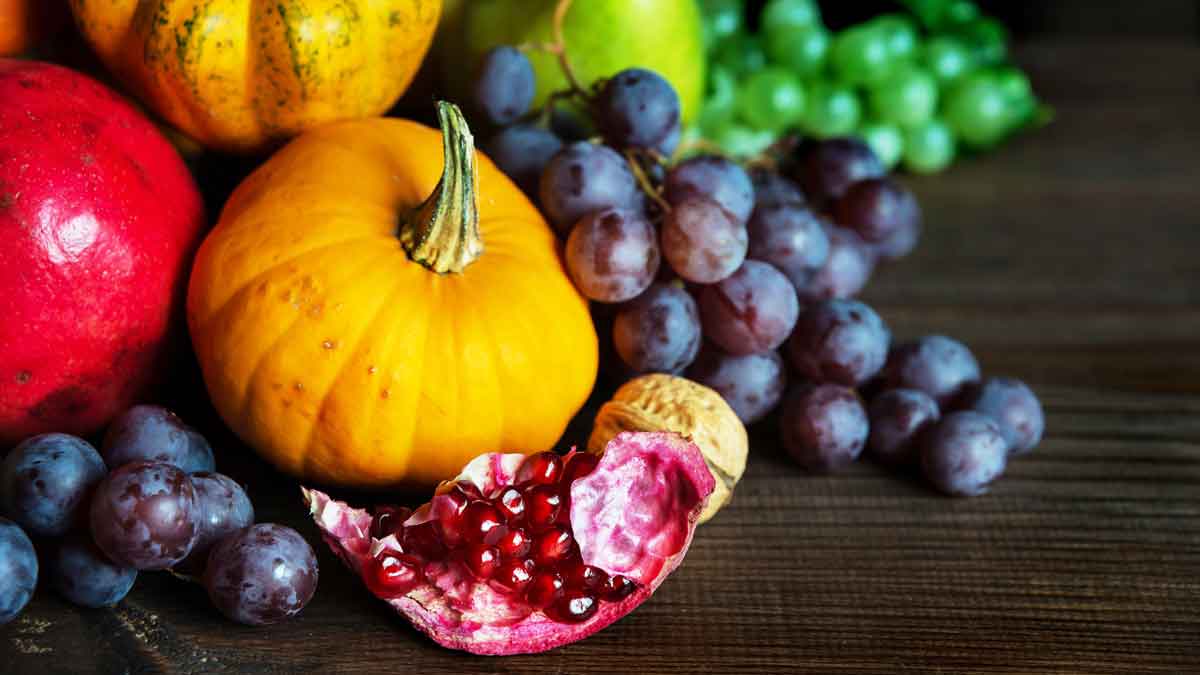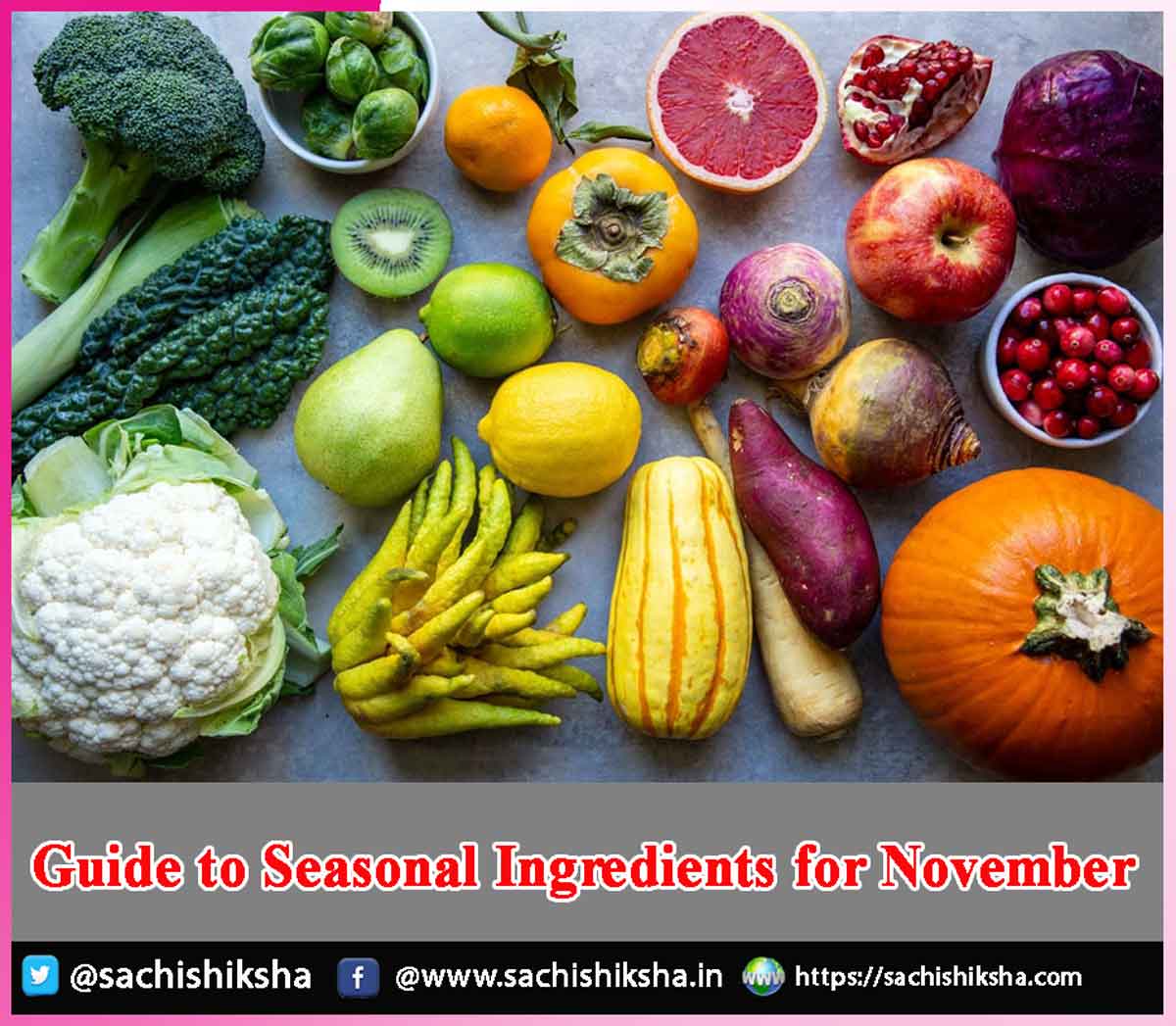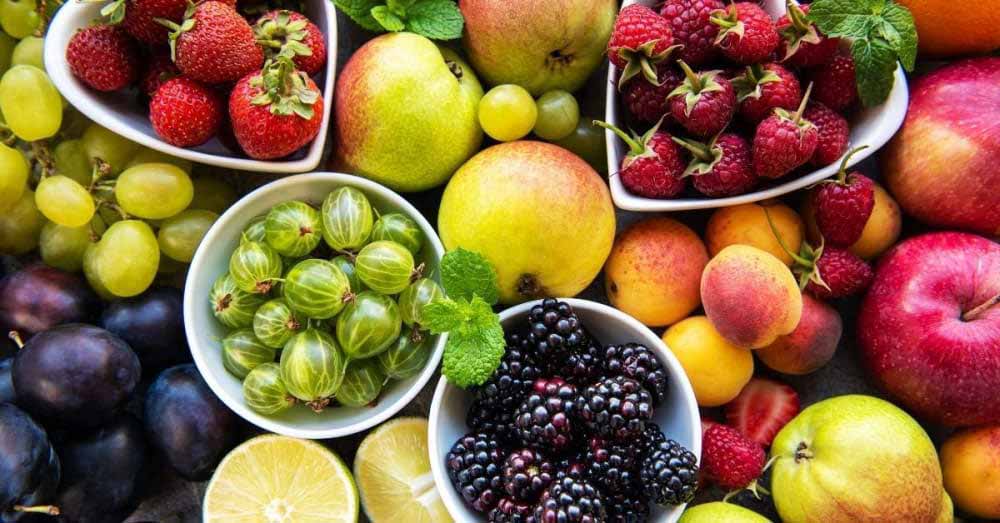Guide to Seasonal Ingredients for November
Introduction : As the crisp air of November settles in, nature’s rhythm shifts, bringing with it a new array of seasonal ingredients to savor. This month is a transitional period between the abundant harvest of late summer and the deep winter months ahead. It’s a time to embrace hearty, warming dishes that reflect the earthy, comforting flavors of autumn.
 There are abundant of seasonal fruits, vegetables, herbs, and other ingredients that come into their prime in November. Whether one is planning meals for cozy evenings at home or preparing for the holiday feasts, understanding what’s in season can enhance their dishes with freshness, flavor, and nutrition. From root vegetables to citrus fruits, November’s bounty is a celebration of both harvest and preparation for the colder months ahead.
There are abundant of seasonal fruits, vegetables, herbs, and other ingredients that come into their prime in November. Whether one is planning meals for cozy evenings at home or preparing for the holiday feasts, understanding what’s in season can enhance their dishes with freshness, flavor, and nutrition. From root vegetables to citrus fruits, November’s bounty is a celebration of both harvest and preparation for the colder months ahead.
Table of Contents
Vegetables: Rooted in the Season
Sweet Potatoes:
Sweet potatoes are a quintessential November ingredient. Their rich, orange flesh and natural sweetness are unique. Roasted, mashed, or even used in casseroles, sweet potatoes can be incorporated into everything from hearty stews to Thanksgiving pies. High in vitamins A and C, fiber, and potassium, they’re as nutritious as they are versatile. For a simple yet flavorful dish, try roasting sweet potato cubes with olive oil, garlic, and a touch of cinnamon.
Brussels Sprouts:
Although Brussels sprouts can often be found year-round, their peak season runs through fall and into early winter. These tiny cabbage-like vegetables have a distinctive, slightly bitter flavor that becomes mellow and nutty when roasted or sautéed. Roasting Brussels sprouts with balsamic vinegar, honey, and crispy bacon transforms them into a crowd-pleasing side dish. Rich in vitamins K and C, as well as fiber, Brussels sprouts are a great addition to any meal for their health benefits and robust flavor.
Squash (Butternut, Acorn, and Kabocha):
Winter squash varieties like butternut, acorn, and Kabocha come into their prime in November, offering a perfect balance of sweetness and earthiness. Butternut squash is particularly popular due to its smooth texture and sweet flavor, making it ideal for soups and roasted vegetable medleys. Acorn squash has a mild sweetness that pairs wonderfully with brown sugar, butter, or savory stuffing, while Kabocha squash offers a richer, creamier texture that makes it perfect for curries or mashes. All varieties are rich in vitamins A and C, as well as antioxidants, making them a great choice for fall meals.
Carrots:
Root vegetables like carrots thrive in November’s cool temperatures. Their natural sweetness and versatility make them a favorite in soups, stews, and roasted vegetable dishes. When purchasing carrots in November, one should go for strong ones with radiant, dark orange colors. Carrots can be roasted with rosemary and garlic for extra flavor. They also lend themselves well to cakes, particularly when paired with spices like cinnamon and nutmeg.
Parsnips:
Often overlooked, parsnips are a wonderful root vegetable that comes into season in late autumn. Their flavor is similar to carrots but with a nuttier, slightly spicier undertone. Roasted parsnips, mashed parsnips, or even parsnip fries are all excellent options. The natural sweetness of parsnips pairs beautifully with earthy herbs like thyme and rosemary. They are also rich in fiber and vitamin C, making them a healthy addition to any dish.
Fruits: Sweet & Tart Offerings
Pomegranates:
Pomegranates come into season in November and are a beautiful addition to both savory and sweet dishes. Their jewel-like seeds add a burst of color and flavor to salads, grain bowls or even desserts. The tartness of pomegranate seeds balances out richer dishes, and they are packed with antioxidants, vitamin C, and fiber. You can also use pomegranate juice in marinades.
Citrus (Oranges, Grapefruits, and Lemons):
Though citrus fruits are typically thought of as a winter ingredient, many varieties begin to ripen in late November. Oranges, grapefruits, and lemons bring a bright contrast to the earthier flavors of fall. Blood oranges, in particular, offer a stunning deep red color and a tangy-sweet flavor that works well in both sweet and savory dishes. Fresh-squeezed orange juice or lemon zest can elevate the flavor profile of baked goods, salads, and sauces. Citrus fruits are also an excellent source of vitamin C, helping to boost the immune system during the colder months.
Pears:
Pears are a delightful fruit that reaches its peak season in November. Varieties like Bartlett have brought their own unique texture and flavor profile. Bartlett pears are juicy and sweet, while Bosc pears are firmer and great for baking. Pears can be enjoyed fresh, roasted, poached, or even used in savory dishes like salads. A classic pairing is roasted pears with blue cheese and walnuts.
Apples:
Although apple season technically starts in early fall, many varieties continue to be at their peak in November. Apples are incredibly versatile and can be used in a variety of dishes, from pies and tarts to savory stews and salads. Tart apples like Granny Smith are perfect for baking, while sweeter varieties like Fuji or Gala make great snacks or additions to sauces. Apples are also fantastic when paired with root vegetables, like carrots or sweet potatoes, to create a naturally sweet and savory dish.
Herbs & Spices: Warming and Aromatic
Sage:
Sage is a fragrant herb that’s synonymous with fall and winter cooking. Its earthy, slightly peppery flavor makes it a perfect addition to savory dishes like stuffing and casseroles. November is the height of sage season, and its pungency can elevate everything from squash soups to creamy mashed potatoes.
Thyme:
Thyme is another herb that thrives during the cooler months. Its subtle earthy flavor works well in slow-cooked dishes, like soups, stews and its woody stems can be used to infuse broths and stocks. Fresh thyme is perfect for seasoning roasted vegetables, especially root vegetables like potatoes, carrots, and parsnips. For an aromatic boost, try adding thyme to your
Cinnamon and Nutmeg:
As the temperatures drop, the warm, comforting spices of cinnamon and nutmeg come to the forefront. Both are staples in fall baking, from pumpkin pies to cinnamon rolls, but they also add depth to savory dishes. Sprinkle cinnamon in stews and curries for a subtle sweetness, or incorporate nutmeg into mashed potatoes or squash soups for an unexpected twist. These spices not only enhance the flavor of your dishes, but they also have numerous health benefits, including anti-inflammatory properties.
Preserved Ingredients: Stocking Up for Winter
Canned and Jarred Goods:
As November marks the transition into winter, many people turn to preserving the abundance of late autumn produce. Whether through canning, fermenting, or drying, the ingredients you preserve now will help sustain you through the colder months. This includes jams, pickles, sauerkraut, and canned tomatoes, all of which retain much of their fresh flavor and nutrition.
Dried Beans and Legumes:
Dried beans and legumes become a staple in many kitchens as the weather cools. Lentils, chickpeas, black beans, and cannellini beans are versatile ingredients for soups, stews, and salads. They provide a plant-based protein source, are high in fiber, and are easy to store for months. Incorporating beans into your meals can add heartiness to vegetarian dishes.
Conclusion
November is a month of abundance, from the last harvest of the season to the beginnings of winter preparations. The seasonal ingredients available this month are diverse and full of flavor, offering endless possibilities for good health.















































